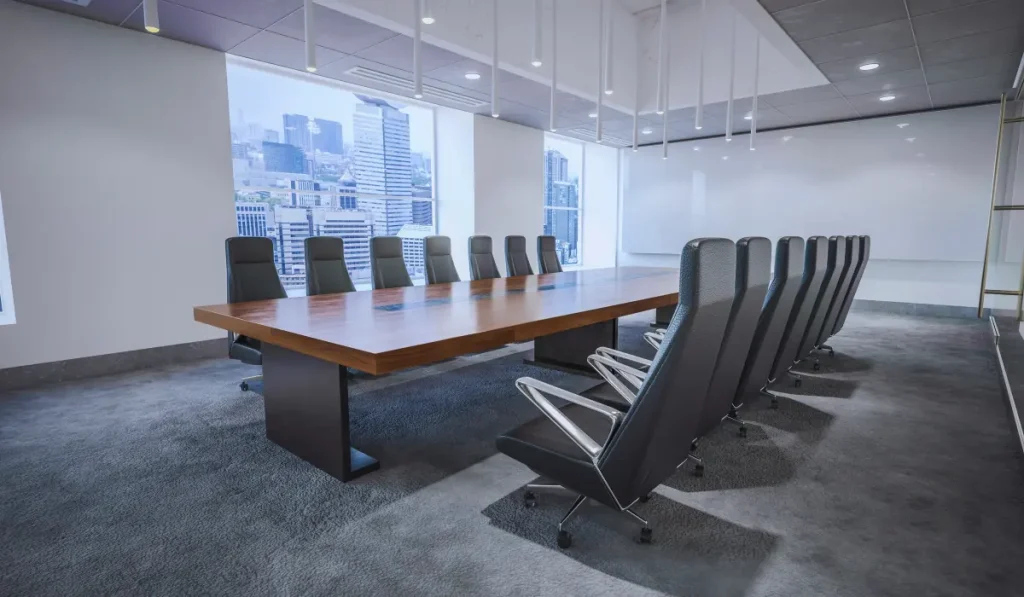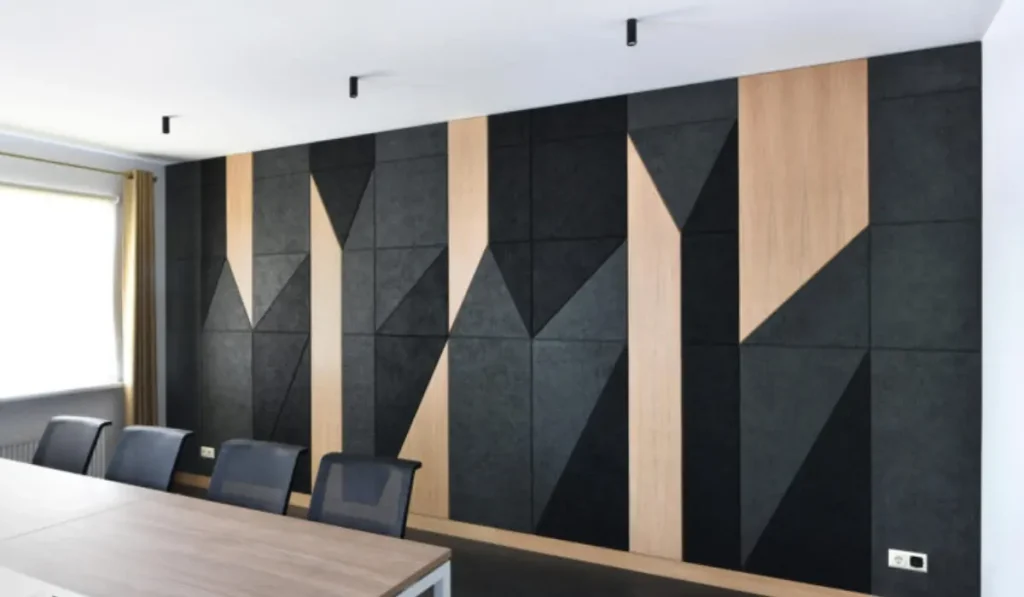In the modern era of remote work, hybrid meetings, and global collaboration, the conference room has become the heartbeat of organizational communication. Yet, one often-overlooked factor continues to compromise meeting quality, poor acoustics. As we step into 2025, the importance of Conference Room Acoustics can no longer be ignored. Whether you’re a multinational enterprise or a local firm, the right acoustic treatment can transform how effectively your team communicates, collaborates, and makes decisions.
This blog explores why every conference room needs acoustic treatment in 2025, the problems it solves, and how businesses can implement practical solutions to enhance communication and productivity.
The Role of the Modern Conference Room
In 2025, conference rooms are more than just physical spaces, they’re digital collaboration hubs. With the rise of hybrid work models and cloud-based meeting platforms, businesses rely on high-quality audio to bridge the gap between in-person and remote participants. However, poor conference room acoustics can derail even the best-laid meeting agendas, causing miscommunication, frustration, and productivity loss.
What Is Acoustic Treatment?
Acoustic treatment refers to the process of managing how sound behaves within a room. This includes:
- Absorbing excessive reverberation
- Minimizing echoes and background noise
- Improving speech clarity
Unlike soundproofing (which blocks sound from entering or exiting a room), acoustic treatment optimizes sound within the space itself, making it essential for any room where communication is key.

Why Conference Room Acoustics Matter More Than Ever in 2025
With AI transcription tools, video conferencing platforms, and real-time collaboration now standard, poor acoustics no longer just “bother” participants, they break communication systems entirely.
Here’s why conference room acoustics are more critical than ever:
- Hybrid Meetings: Bad audio quality creates an unfair experience for remote participants.
- Speech Recognition Tools: AI assistants and auto-transcription tools rely on clear input.
- Employee Well-being: Echoes and noise fatigue can cause stress and concentration issues.
- Brand Perception: Poor audio in client-facing meetings can hurt your brand image.
In 2025, companies can no longer afford to treat acoustics as an afterthought.
Common Acoustic Problems in Conference Rooms
Here are some frequent issues that plague poorly designed conference rooms:
1. Echo and Reverberation
Hard surfaces such as glass, concrete, and whiteboards reflect sound, creating long-lasting echoes that blur speech clarity.
2. Background Noise
HVAC systems, hallway conversations, and street sounds can infiltrate meetings and distract participants.
3. Uneven Sound Distribution
In large or irregularly shaped rooms, participants may hear audio at drastically different volumes or levels of clarity.
4. Poor Microphone Pickup
Echoes and background noise interfere with microphone input, causing problems in remote meetings and recordings.
Each of these issues stems from inadequate attention to conference room acoustics.
Business Benefits of Acoustic Treatment
Investing in acoustic treatment offers significant returns. Here’s how:
1. Clearer Communication
Better acoustics lead to more efficient meetings by reducing the need to repeat or clarify statements.
2. Enhanced Collaboration
When everyone hears and understands each other clearly, collaboration improves dramatically.
3. Increased Productivity
Fewer distractions mean more focused discussions and faster decision-making.
4. Better Technology Integration
AV systems, voice assistants, and transcription tools work better in acoustically optimized rooms.
5. Improved Professionalism
High-quality audio reflects positively on your business during client and stakeholder interactions.
Acoustic Treatment Solutions for Conference Rooms
There are multiple ways to enhance conference room acoustics, ranging from simple upgrades to advanced design strategies.
1. Acoustic Panels
Wall-mounted fabric panels absorb excess sound reflections and reduce echo.
2. Ceiling Clouds and Baffles
These suspended treatments address sound bouncing from ceilings, especially useful in rooms with high or vaulted ceilings.
3. Carpets and Curtains
Soft furnishings can absorb sound and reduce reverberation in minimalist or glass-heavy spaces.
4. Acoustic Furniture
Specially designed chairs, sofas, and work tables can help absorb sound in multipurpose rooms.
5. Door and Window Seals
Sealing gaps around doors and windows reduces external noise interference.
6. Sound Masking Systems
These systems introduce controlled background noise to cover up distractions and create a more consistent sound environment.
Designing a Conference Room with Acoustics in Mind
The best time to consider conference room acoustics is during the design phase, but it’s never too late to upgrade.
Key Design Tips:
- Use a combination of absorptive and diffusive surfaces.
- Avoid parallel walls that reflect sound back and forth.
- Position speakers and microphones strategically to avoid feedback and distortion.
- Choose room shapes that minimize standing waves and flutter echo.
- Integrate AV systems with acoustic needs, don’t treat them separately.
An acoustically optimized room doesn’t just sound better, it feels better for everyone who uses it.
Cost vs. Value: ROI of Acoustic Treatment
Many businesses hesitate to invest in acoustic treatment, fearing high costs. But in reality, the ROI is compelling.
Consider this:
- A single lost sale due to poor communication can outweigh the cost of treating a room.
- Employee productivity losses from miscommunication or fatigue can add up quickly.
- Enhanced audio improves the performance of your existing AV systems, preventing costly upgrades.
In most cases, conference room acoustic improvements can be made affordably and yield benefits almost immediately.
Real-World Success Stories
Global Tech Firm
A Fortune 500 tech company retrofitted all its conference rooms with acoustic panels, ceiling baffles, and integrated sound masking systems. Meeting clarity improved so much that their average meeting time decreased by 20%.
Law Office
A law firm in Dubai struggled with sound leakage and echo in their glass-heavy meeting rooms. By installing discreet acoustic treatments, they not only improved confidentiality but also client satisfaction scores.
Co-Working Space
A co-working hub serving remote teams added mobile acoustic dividers and wall panels in its shared conference areas. User bookings increased by 40% due to improved meeting experiences.
These examples prove that optimizing conference room acoustics is not just a tech upgrade, it’s a business performance boost.

Ready to Elevate Your Conference Room Acoustics?
In today’s hybrid work environment, clear and distraction-free communication is non-negotiable. Whether you’re leading boardroom discussions, virtual presentations, or international team meetings, poor conference room acoustics can severely impact the quality of your conversations and decisions.
At SoundKrafted, we help businesses across Pakistan and the UAE transform their conference rooms with professional acoustic treatment solutions. From echo control and sound absorption to noise isolation and AV integration support, we deliver tailored solutions that enhance clarity, reduce distractions, and improve overall meeting experiences.
Our team of acoustic experts works closely with clients to assess room layouts, identify problem areas, and implement smart, aesthetically pleasing treatments such as:
- Acoustic wall panels and ceiling baffles
- Sound masking systems
- Conference room noise control
- AV system acoustic optimization
- Customized acoustic design consultations
Whether you’re outfitting a corporate office in Lahore or upgrading a boardroom in Dubai, SoundKrafted delivers high-performance acoustic environments that elevate communication and productivity.
Trust SoundKrafted to bring precision, expertise, and innovation to every space we treat.
Contact us today for a free acoustic assessment in Pakistan or the UAE and take the first step toward better sound.

